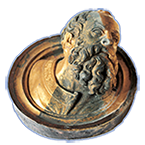Speaker
Description
Within a research project 1,200 selected ancient Greek bronze coins from the Coin Cabinet, Kunsthistorisches Museum Vienna (KHM), were studied concerning their state of preservation and manufacturing technique. The coins had been minted during the Roman imperial time (50 to 280 AD) using alloys with high lead and/or tin contents. As a result of their burial followed by unfavourable storage conditions a number of them show progressive whitish corrosion.
Different analytical techniques were used for the study of the corrosion phenomena. The bulk composition of a selected number of objects was investigated by non-destructive neutron diffraction (Rutherford Appleton Laboratory, ISIS, UK) and the presence of lead rich inclusions in a copper rich matrix by applying neutron tomography studies (Paul Scherrer Institute, CH).
Continuative studies focused on the analysis of the corrosion phases (Cu-, Pb-, Cu/Sn-oxides) as well as on the manufacturing techniques of the antique Greek coins. To enable the distinction between different manufacturing techniques – either cast only or cast and minted –, about 20 coins and 15 laboratory test tokens were analysed by bulk neutron texture analysis. Detected changes in the microcrystalline structure of the alloys were related to the mechanical minting processes.
The presentation will give an overview on the capabilities and limitations of the non-destructive investigations by neutron-based analytical techniques used for studying ancient coins.

